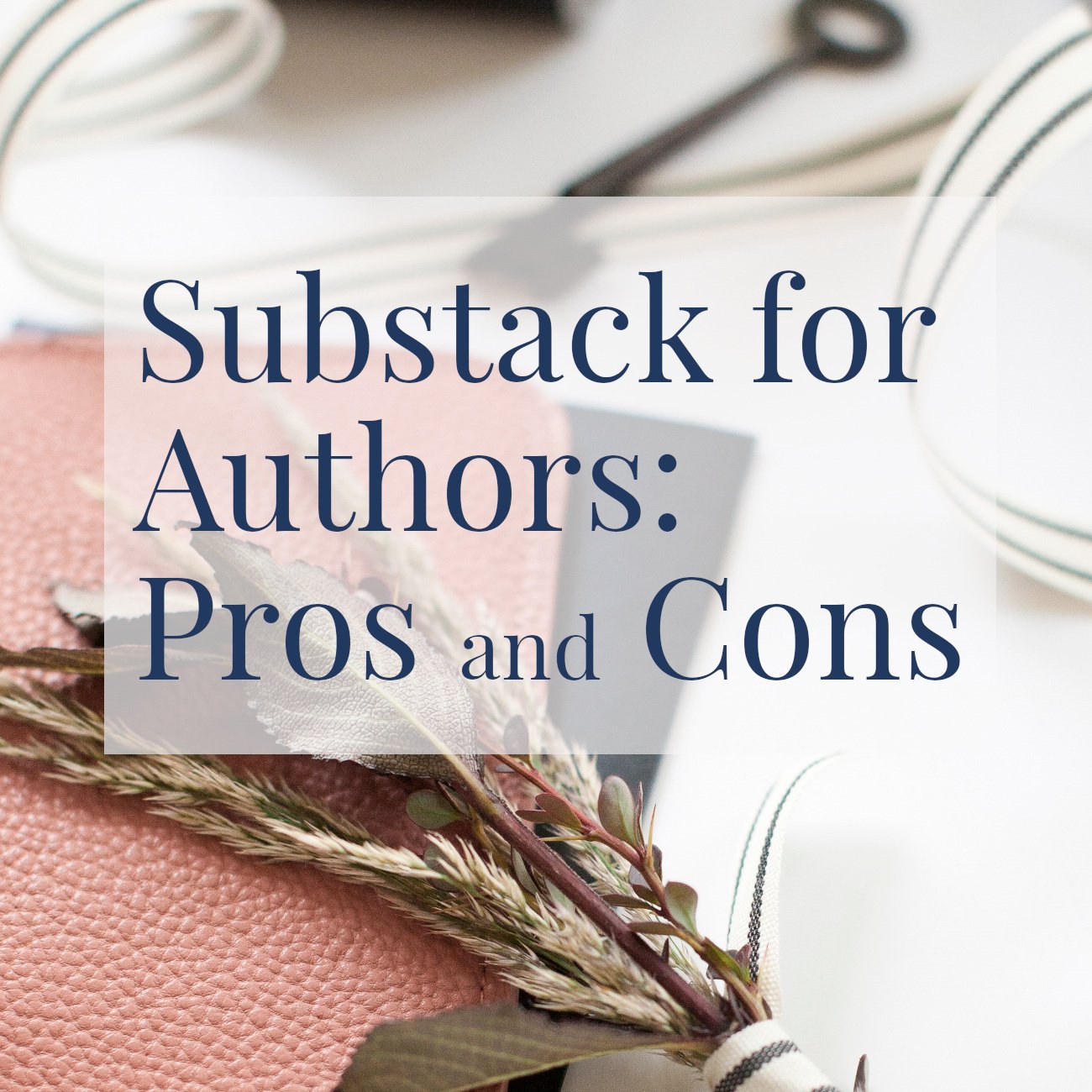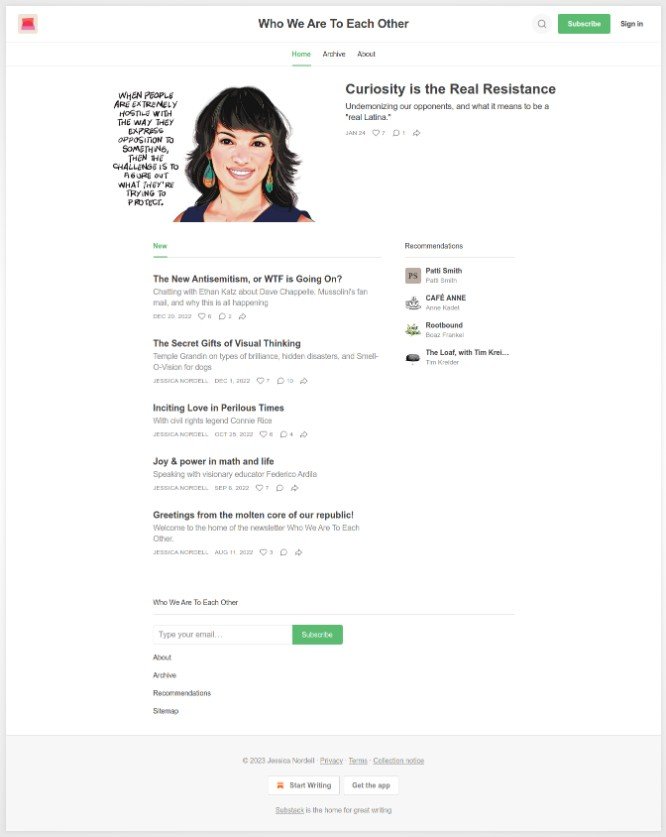Substack for Authors: Pros and Cons
• This article contains affiliate links •
Substack has been attracting massive interest among authors and writers recently. Founded in 2017, the company now claims millions of readers, with over 1 million subscribers paying for content published on the platform.
I’ve been tuned into the author community now for over ten years, and I’ve seen excitement over dozens, if not hundreds, of new tools and tactics for marketing your books. Some platforms stick around, while others come and go. How will Substack fare?
And as an author in 2023, should you join?
What is Substack?
Substack is a simple platform that allows you to write articles, which are then sent automatically by email, to people who have chosen to hear from you.
So, at first glance, it has the characteristics of a blog and email newsletter combined.
For many authors, who don’t enjoy either of these aspects of marketing, or don’t have these things in place yet, Substack is therefore very appealing.
How does Substack work?
Basically, you sign up for an account and get started with these steps:
Choose a publication title, for example yourname.substack.com
Add a logo and short description of what you’ll be writing about
Write your About page and “thank you for subscribing” email
Add an email banner, if you want one
Write your first post
You can also import your blog posts from another platform to Substack, but you’ll need a reasonable level of tech comfort to be able to do this.
(That said, if you already have another platform, I’m not convinced Substack is best for you: see “Cons”, below.)
Substack is free and fast to get started
Additionally, you can import your existing email list, assuming you’ve got permission to send mass emails to those people.
However, if you do already have an email list elsewhere, I don’t think moving it to Substack is the right thing to do. See “Cons”, below.
I also recommend caution with the step during the sign up process where Substack suggests you simply add friends and family to your new list without seeking their permission. According to my understanding, this violates CAN-SPAM legislation in the United States. And it goes against good marketing karma in every country, regardless of actual laws.
Pricing: is Substack free for a writer to use?
Substack is free as long as you’re not charging your subscribers to receive your communications.
Once you start offering a paid subscription, then Substack will take a cut. On the plus side, they only earn when you do.
Can you make money with Substack?
Yes, but don't rush in too fast. The main page of Substack that a new visitor sees promises that “independent writers and podcasters (can) publish directly to their audience and get paid through subscriptions”.
But as with any approach to monetizing your work, this income doesn’t just appear. You still need to build your audience and convince them that your words are worth paying for, in a world where quality, free information is abundant.
The upbeat wording on the Substack website promises that “all” you need to do is find a thousand subscribers who will pay you $5 per month, to generate a (gross) income of $60,000 per year. Well, yes, the arithmetic works, but that goal is BIG. To put it in context, you’ll need to have the reach, experience and gravity of someone like Jane Friedman to achieve it. (According to her Hot Sheet sponsorship page, she has 2,000 subscribers, but that’s not all profit. Her revenue also pays for a copyeditor and production director, to help deliver the publication.)
Pros of Substack
A simple, stylish Substack by my client, Jessica Nordell
It’s simple to use.
It’s free to get started.
If you need to, you can import blog posts and email subscribers.
You can embed a Substack sign up form on your website. Here’s how to integrate Substack with Squarespace.
You can send one welcome email, when a new subscriber signs up.
Substack does offer some help for you to get discovered:
There is a recommendations ecosystem, where you can suggest writers you like to your audience, and other Substack writers may recommend you in turn.
If you connect your Twitter account to Substack, then your Twitter followers will see your publication if they later join Substack with a reader account.
Your readers can respond to your posts in a discussion thread, which arguably leads to more engagement and community than you would see from email marketing alone.
If your audience loves your work enough, you can start making money easily from paid subscriptions.
There is no flat monthly fee, so Substack only cost money once you’re earning.
Substack offers a podcasting feature too, although I haven’t researched it.
Cons of Substack
Substack’s email marketing features are extremely limited.
You can’t personalize your emails, using a subscriber’s name.
If you want to deliver a lead magnet to new subscribers, you’ll need to figure out how to link to it from your single thank you email.
You can’t send different communications to different segments of your list, or according to the interests they’ve told you about.
You can’t send tailored automation sequences to nurture your audience in distinct ways, so you can’t grow your income with Value Ladder Marketing or Funnels.
Although you can integrate a Substack sign up form on your website, you’ll need custom coding if you want a popup call to action.
The simplicity of the tool restricts your ability to grow and to make your marketing more sophisticated.
You are driving traffic and followers to (and through) a platform that you don’t own. So, you’re building your house on borrowed land. As with all forms of social media, this means Substack can change their rules or pricing — or even disappear — overnight.
If you do decide to monetize your emails with paying subscribers, you’ll pay fees to Substack and Stripe of almost 13%. This is high, compared to a competitor like ConvertKit.
And no matter what Substack promises, you will still need to do the bulk of the work to grow your following. Whatever you release using Substack, it’s usually going to reach people who are already in your audience.
Verdict: should you start using Substack as an author in 2023?
Yes, if you:
Do not have a blog on your website, and you have no intention of starting one
Have absolutely no email list yet
Are looking for simplicity above all else
You don’t mind “boxing yourself in” with a tool that doesn’t allow for more sophisticated marketing later (or you’re willing to migrate, down the road)
You are willing to publish interesting, quality content on a consistent basis, to grow your audience
No, if you:
Are looking for the latest “magic bullet” to help sell your books
You already have a blog and / or email list provider, no matter how neglected
You want to be able to tag and segment your email list, and/or send automated messages, welcome sequences, and tailored content
You are serious about growing a robust and profitable author business
In other words, Substack is much better than nothing. It’s pretty easy, and pretty simple. But you need to consider your long-term goals before jumping in.
What alternative tools can you look at instead of Substack?
If you want to play big in your author business, I recommend Squarespace for your website (and blog) and ConvertKit for your email marketing.
Strengths of ConvertKit are explained here, and/or you can sign up for my free resources to get a taste of automated emails delivered by ConvertKit
•
Would you like me to design and build your Squarespace author website?
As a professional specializing in author website design, I’m an expert in using all the above features to create a stunning and effective home for your work. If you’d like technical expertise, book marketing advice, and all of the implementation taken care of, consider hiring me.
After careful preparation together, I’ll design, build and launch your site in just 2 weeks. Learn more, and then schedule our free and friendly chat.
Other resources for supercharging your author website
And for the essential steps in your website project, take a look at my free 50 Step Website Checklist.












